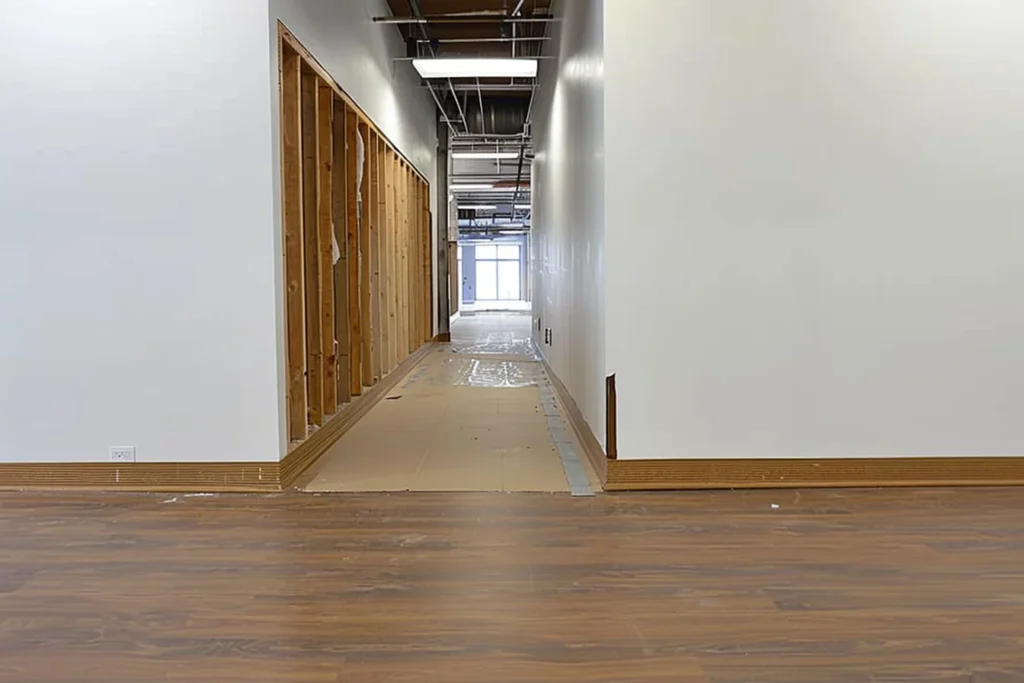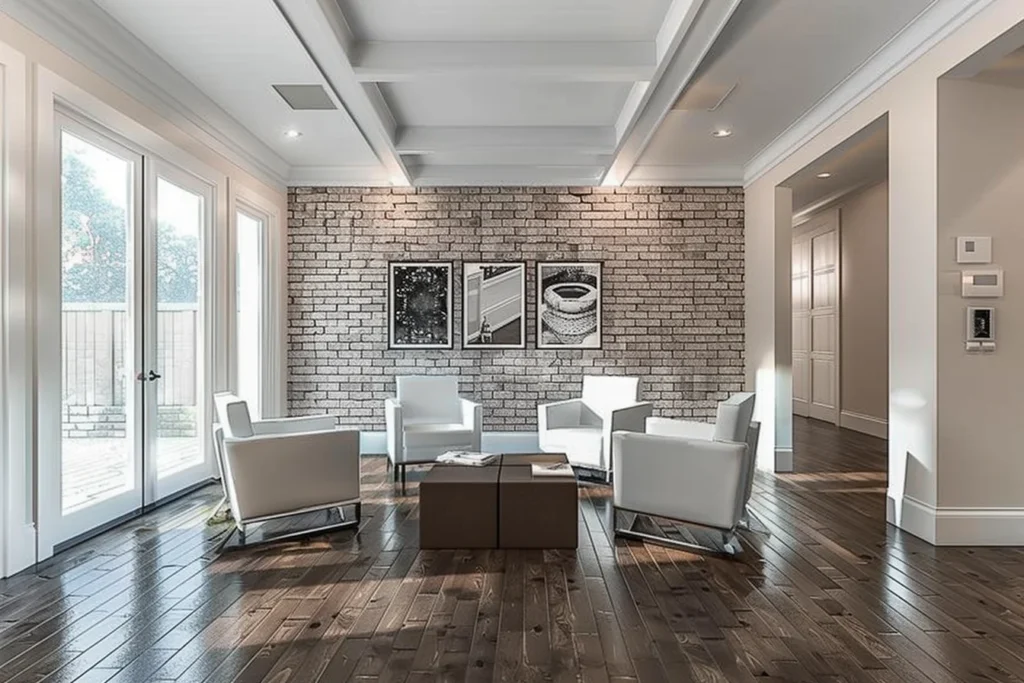Why is it then that drywall has been the standard for so long as the primary material used in walls? It’s a bountiful source of dents and scratches.
Notably, my kids would deny having knowledge of how they appeared there a fact that I admit.
Hanging heavier things than picture frames means embarking on an adventure looking for hidden studs.
The drywall weighs a lot, it is burdensome to install it, it’s always moist with molds, and definitely not eco-friendly.

So why do we still keep using it? However, despite all these shortcomings, this old horse of a wall retaining system still has some tricks remaining under its sleeves:
- Simple installation: my life can be lost if due to time in my inability to put up even one sheet of gypsum board among the whole picture of construction materials.
- Affordability: Of course, you have to purchase them but when all else fails, your pocket will not strain too much compared to other methods employed.
- Fire Resistance: The core material for drywall is gypsum which pretty much turns into steam when a fire breaks out thus slowing down its spread thereby buying enough time to contain it.
- Acoustic Insulation: Drywall may not be an acoustic sensation, but she performs admirably well when called upon to mute sound waves.
- Smooth Finish: An empty slate. Smooth, ready to be painted or wallpapered, and just waiting for a few elegant touches from you to create an interior with panache.
- Design Flexibility: Drywall will make it easier, unlike other materials that are more rigid.
- Repair and Modifications: I mean yes the drywall can break if you stare at it too hard but then again patching up is as simple as some spackle and tape.
- Energy Efficiency: Not just any wall, but one that helps keep down energy costs by being a solid barrier that insulates your house well.
So, you want to give drywall the cold shoulder? I understand completely.
However, remember that there are other alternatives available. For example, let’s explore some alternatives to drywall that might revitalize your interior without all of these soundproofing problems.
Alternative Wall Coverings to Drywall
- Plywood

Pros:
• Cheap: This material is cheaper than expensive high-maintenance solid wood meaning it is affordable, especially for large surfaces.
• Hard Nut: Plywood panels have cross-grain layers just like bodybuilders do. They are very strong and can handle heavy loads without giving up.
Cons:
• Invisible Woman: Plywood looks quite plain on its own. It may require a fresh coat of paint or fancy veneering in order to look attractive.
• Water Lover: While plywood can withstand many things, water can be its Achilles’ heel. Without proper sealing, it could soak up water like a sponge.
- Wood Planks or Panels

Pros:
• Of course nothing beats natural wood. With different finishes, they will become either modern-looking or rustic-type walls.
• Durable: Properly maintained wooden paneling outlasts even your favorite jeans thus it has cosiness as well as noise isolation built into it.
Cons:
• Costly: Quality wood is not cheap particularly if you want something exotic or reclaimed.
• Maintaining Fever: In order to avoid wrapping and bug damage, this material needs attention from time to time such as staining and sealing regularly.
- Plastic Panels

Pros:
• Poison Ivy Soldiers: Due to moisture resistance plastic panels are viable options for places e.g., bathrooms and basements prone to dampness.
• It’s Easy Does It Time Now!: You don’t need to bother about painting them regularly since they can be cleaned with so much ease.
Cons:
• Chemical Warfare: New plastic panels release volatiles such as VOCs and this could affect the indoor air quality in your house.
• Not Green at All: The manufacture and disposal of plastics are not very environmentally friendly unlike being non-biodegradable.
- Veneer Plaster
Pros:
• Looks for Less: Get the runway look without the designer price tag. It gives you the lovely appearance of real wood, with its smorgasbord of grains and hues.

• Eco-Warrior: Veneer is also said to be like congratulating the earth for being green. It uses less wood per square foot, stretching out those forest resources like a nice pair of yoga pants.
Cons:
• Touchy-Feely: Think of it as a sensitive type, veneer scrapes easily compared to solid woods.
• Moisture Drama: Knowing that friend who can’t hold their liquor, veneering doesn’t respond well when mixed with water causing puffing up or bubbling if not sealed properly.
- Lath and Plaster
Pros:
• Built to Last: Once installed, it’s as sturdy as Fort Knox. This thing was made for generations to come.
• Quiet Down Now: If you want peace and quiet in your home then lath and plaster are your best friends, they offer better soundproofing than any earplugs on Earth.
Cons:
• Heavy Lifting: Heavy stuff would seem tough on your building’s structural components over time.
• Touch-Ups Tough: You know what I mean? Just try modifying or replacing it… good luck with that!
- Textured Wall Panels
Picture those swanky walls at boutique hotels or upscale cocktail lounges. Now imagine having that cool texture on your living room walls.

This is an easy way to infuse your walls with personality and character that will look great in any room.
- Basement Wall Finishing Systems
If you are using them in the basement, then they can be a bit expensive because of the need for professional installation plus they are pre-fabricated panels that can only be put in place by an expert.
- Brick
Pros:
• Tough as Nails: It will outlast every one of us, and it will look good doing so.
• Low Maintenance: Just a bit of soap and water will keep the brick looking pristine.
• Timelessly Stylish: It’s the classic jeans and white tee of wall materials—always in vogue.
Cons:
• Costly Affair: Quality comes at a price, especially with the intensive labor needed to lay brick.

• Bulk Up: Being a heavy-duty construction material means it could add stress to your structure over time.
• Set in Stone: Even though we want our houses unique from others still some things have limits.
Once a stone has been laid on the wall it is difficult to make a change thus complicating this whole matter of variety.
RELATED: 20 Unique and Creative Kitchen Decorating Ideas
However, stepping away from drywall opens up countless opportunities for creativity, durability, aesthetic appeal, or both.
But keep in mind that everything has its own way of being done, so pick one that suits your space and style best. Enjoy renovation!